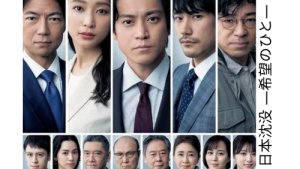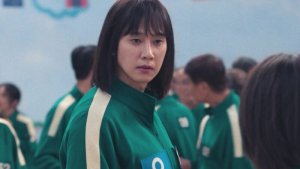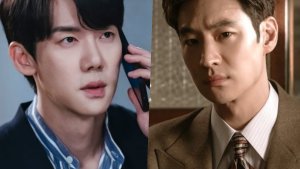 Top 25 Japanese Actresses on MDL
Top 25 Japanese Actresses on MDL

I had this crazy idea to help build the Japanese database on MDL from the beginning. Adding all the crew roles and actors and titles as the industry grew from one man who studied abroad in France to the thriving industry it is today. And because it's me, I decided to make an article series for the journey for you to see as well. As usual, I will include sources at the end. Everything in green is linked to off-site.
Now you might be asking yourself, why add movies that people can never watch? Because most of these super early films were lost to either natural or man-made disasters. I see MDL as a database for all movies and dramas that also can hold scholarly interest as well as those of us that watch for more shallow reasons. ; )
Quick note:
The term "movie" or "eiga" did not come out until around 1915 so terms like "activity photo" "actuality" and "dekita koto shashin" (photographic happening) as well as other similar terms were used during the infancy of the industry.
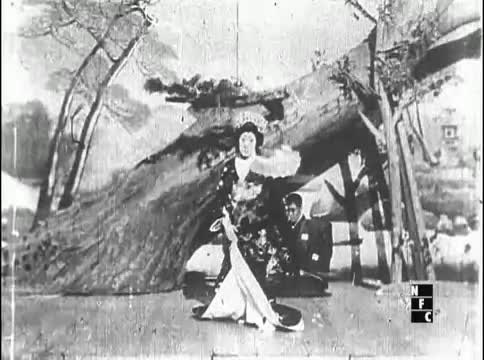
While in 1896 a gunpowder shop owner named Shinji Takahashi had a viewing for Prince Komatsu Akihito with Edison's Kinescope, it wasn't until the following year that the industry took hold in Japan.
In 1897, Inabata Katsutaro returned to Japan as Lumiere Company's representative, with a Cinematographe, a French cameraman, and another notable cameraman called Shibata Tsunekichi. Together they shot 33 films of Japanese daily life and the countryside as well as the Ainu people whose culture was under attack. The series is known as Meiji no Nihon. I could not find these named anywhere nor which ones were shot by Griel (the French cameraman) or which were shot by Shibata.
The Konishi Honten photography shop imported the first film camera. Shiro Asano, an employee at the head office of Konishi, used this camera to shoot street scenes in Nihonbashi, Asakusa, and Ginza, so it is believed that he was the first Japanese to successfully complete the whole process of shooting, developing, and printing film. (©Joaquín da Silva) Shibata, who was with Mitsukoshi Photo Club, assisted him on many of his shoots, learning the new equipment.
During this year censorship was used for the first time with a foreign movie that contained "the butterfly dance" (sources conflict which actress version), for lifting her leg too high during the dance. Because it was a set showing with multiple films, an omnibus of sorts, the parts with that movement were removed from the film and shown publicly after that.
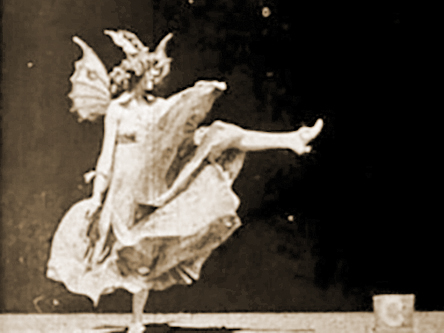
Here's where Komada Koyo comes into the picture as a promoter or "producer" as we would label him today. He has the idea to make advertisement films for local establishments with famous Geishas dancing among signs for the establishments. These misemono shows were used to sell the camera to would-be buyers by showing their capabilities. It is argued who did the advertisement movie, Shibata or Asano since sources conflict and interviews with Asano also contradict each other.
In October 1898 Asano leaves Konishi Honten, but not before training Shibata on film techniques. Even though he is no longer employed there, he still uses the location and employees to film Resurrection of a Corpse, Burglar, and Jizo the Spook.
Shibata goes on to film Momijigari, three scenes from the Kabuki play of the same name. Ichikawa Danjuro IX, the star, disliked moving pictures so much he only allowed one take and refused the release of the film until July 1903 when he was too sick to perform in Osaka and agreed to let the film shot four years earlier to be shown in his stead.
Remember back in paragraph one when I talked about Inabata? Came back from France with a nifty new toy that kicks off filming in Japan? Well, he got bored and disillusioned really soon after and gave his camera to a friend, Yokota Mammosuke, who in turn gave it to his brother, Yokota Einosuke, who was now working for a company called Yoshizawa Shoten. We'll find out more about him later. Yoshizawa Shoten is the company that arranges a double showing of Momijigari and Ninin Dojoji. This company worked with "magic lantern" movies. The president, Kawaura Kenichi, got his Cinematographe from Italy. The company had an office in London and was the first company to manufacture motion picture equipment domestically in 1900. This company also established the first permanent movie theater, the Denkikan, in Asakusa in Tokyo in 1903.
1899 adds yet another founding father of Japanese cinema, Tsuchiya Tsuneji. One of the first cameramen in Japanese cinema history. A former carpenter, Tsuchiya traveled to North America to help in the construction of a Japanese garden and tea house at the 1893 Chicago World's Fair. After learning film techniques on how to operate a camera and develop film in December 1898, he returned to Japan carrying an Urban Bioscope camera. Taking inspiration from boxing match film actualities popular in the United States, he conceived the idea of filming sumo wrestlers at the Ryogoku Ekoin. This resulted in his first film Ekoin Sumo Summer Tournament.
With the Boxer Rebellion going on, Yoshizawa Shoten, influenced by American films of the Spanish-American War in Cuba and The Philippines Revolution, sends Shibata Tsunekichi and Fukaya Komakichi over to film what becomes Japan's first newsreel, Grand Motion Picture on the Boxer Rebellion.
In 1899, 22-year-old Komada Koyo purchased a movie camera from Konishi Camera Store and ordered shooting from Asano in the same year. By Konishi camera shop, grass-ku, restaurant "of autumn leaves Pavilion dance of the geisha of 3 people" was filmed. This "Geisha's Hand Dance" was regarded as "Japan's first movie for commercial release" and was released at Kabuki-za on June 20 the same year.
The Yokota brothers and Inabata Katsuro travelled to France in 1900 to take part in the Paris World Exposition as committee members of Kyoto Prefecture. There, Einosuke witnessed the rapid development of the movie industry and cinema's increasing popularity and considered a renewed foray into the movie business. In June he returned to Japan after securing a contract with the French Pathe film company and the acquisition of a new film projector. According to the chronological history ("nenpu") written by him, the agreement with Pathe stipulated the sending by the French film company of five reels of film every month, increasing to ten reels each month from the next year. In August, Yokota presented the first batch of imported films at Tokyo's Shintomi-za theatre.
In his entry for 1901, he recorded the establishment of the Yokota Shokai (company). This conflicts with other sources (for example Sharp) that set its founding date two years later. Tajima Ryochi acknowledges that Yokota's chronology contains many mistakes. Thus, he explains how film historians have argued that the company was initially known as Yokota Kyodai Shokai (Yokota Brothers Company) in reference to the business partnership with his elder brother. It is not clear when the change of the name of the company took place. As Tajima points out, film historian Tanaka Junichiro argued that the renaming occurred after the company's success stemmed from film shows dealing with the Russo-Japanese war (1904-5). (quoted from Joaquín da Silva)
In 1904, the Russo-Japanese war broke out, and news documentary movies were very popular and kept the industry thriving. Soon there were plays enacting the scenes on the newsreels. Seiro no Kogun (The Imperial Army Attacks Russia) is regarded as the first rensageki. These films were often part of a traveling roadshow and shown in makeshift theaters set up just for the event.
There were many reporters who set out to follow troops and record their activities on the front lines such as Fujiwara Kozaburo and his assistant Shimizu Kumejiro (Yoshizawa), Shibata Tsunekichi (Hakubun-kan), Kuboi Shinichi, Ito Kyutaro, and Kitabatake Tadao, just to name a few. By 1910, Yoshizawa Shoten's price lists of magic lantern slides, films, and related equipment published the sales of 93 Russo-Japanese War works, either for sale or loan, of various lengths, from 30 to 500 feet. On the December 1905 catalog, 10 films were credited to Fujiwara Kozaburo and 13 to Shibata Tsunekichi.
In October 1905, Yoshizawa Shoten's cameraman Chiba Kichizo, during the filming of the victory parade to celebrate the triumphal return of war hero Admiral Togo Heihachiro, dismounted his lightweight Gaumont camera from its tripod and placed it on his shoulder to shoot the parade. Also at the same event, Chiba, holding the camera with both hands, began filming as he made his way through the lines of people while Edamasa, walking by his side, cranked the camera. This could arguably be the first moving, hand-held, camera shot in Japanese cinema history.
In 1906, filming began on a movie about the Taiwanese people, Taiwan Jitsukyo no Shogai, produced by Takamatsu Toyojiro, an influential person in the cinema history of Taiwan. It was shot in more than one hundred locations and included a variety of subjects such as urban construction, railway, agriculture, and the lifestyle of aborigines.
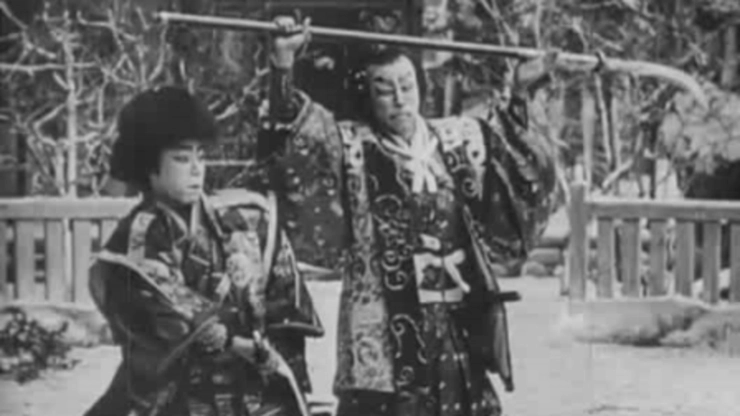
Because MDL search does not allow you to search for these titles by date --yet-- but only by name, I am leaving a partial list here as I am not done inputting all the ones I found yet. Also, IMDB has a lot more titles but no native names so I cannot verify they are correct or not and have been refraining from adding them.
For further or more in-depth reading, here are my sources:
Meiji Period on Film ✿ A History of Early Cinema in Kyoto, Japan ✿ Chronology of Japanese Cinema ✿ JMDB 1899年 - 1909 年 ✿ Mr. OptyKon ✿
In the next installment, we will cover works until 1920, the forming of Nikkatsu, benshis, and so much more. Hope to see you there : )
Editors: BrightestStar (2nd editor)



